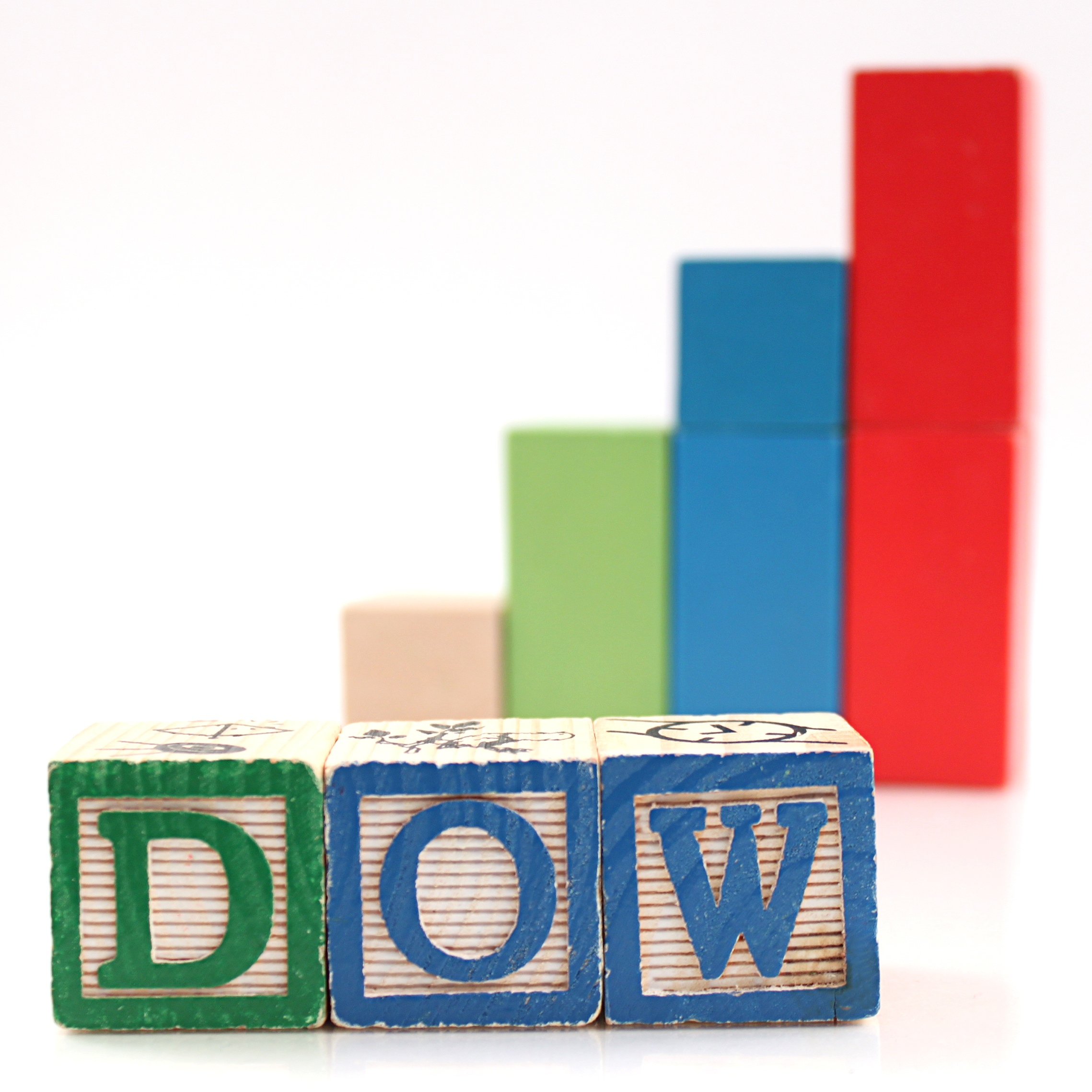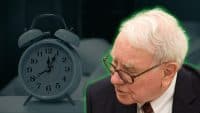
In the first days of each year, 24/7 Wall St. uses the average implied upside of each Dow Jones Industrial Average component to generate an upside price target. It has been off in some years and incredibly close in others. The peak performance price for the Dow was up at 19,700 by the end of 2016.
What has taken hold at the end of 2016 is that the Dow, S&P 500, NASDAQ, and even the Russell 2,000 all closed at record highs. That hasn’t happened since the last trading day of 1999.
It seemed too good to be true that we would see 19,700 on the Dow in 2016 when the first few weeks of the year were so ugly. The market was in a major sell-off for the worst start of any year of our lives.
Now the DJIA is all the way at 18,956, up almost 9% year to date. At the start of 2016, few were predicting a President Trump because the race had so many candidates, but the post-Trump victory rally has been massive for a whole slew of sectors: stocks tied to financials and those that win with higher interest rates, industrials, infrastructure, defense, and more.
The average Dow stock dividend was about 2.8% at the end of 2015, very close to the same at the end of 2016 due to many dividend hikes. Our peak-Dow calculation for 2015 was a 7.4% gain to 19,142. That level remains unseen as of November 22, but that 19,700 peak-Dow for 2016 would require a gain of only 3.9%.
Not all Dow stocks have risen in 2016, even though that was the consensus among Thomson Reuters analysts at the start of 2016.
Shares of Apple, Boeing, Pfizer, Nike and Disney have not lived up to expectations. As far as upside surprises, IBM, Caterpillar, and Chevron are the great winners. These have been covered in detail below with some brief color. Consensus analyst price targets are from Thomson Reuters.
APPLE
Apple Inc. (NASDAQ: AAPL) is up about 8%, if you include dividends, far shy of the way-too-optimistic upside call of 42% at the start of 2016. Apple has been in limbo for some time and now the question is whether an all-out iPhone 8 launch in late 2017 will become a make-or-break event for the company as its customer refresh cycle starts to lengthen greatly ahead. Also, Apple could be one of the top overseas cash repatriation winner in 2017.
At $111.75 on last look, Apple shares have a 52-week range of $89.47 to $119.86, and the consensus analyst target price for 12-months out is roughly $131.00. Apple also yields 2.05%.
BOEING
Boeing Co. (NYSE: BA) has also been disappointing with a 5% return versus almost 16% expected return at the start of this year. Boeing has seen a very large swing up and down, and any global recovery taking stronger hold should help Boeing (Ditto for defense spending boosts).
Boeing trades at $147.02, and has a consensus analyst price target of $151.22 and a 52-week range of $102.10 to $150.09.
NIKE
The biggest disappointment by far has been Nike Inc. (NYSE: NKE). Nike was expected to post a return of almost 18% for 2016, and so far it is actually down by almost that much. Expectations now seem so low for Nike that maybe Nike could pull a Caterpillar-like surprise in 2017. Maybe.
Nike most recently closed at $51.28, versus a 52-week range of $49.01 to $68.19 and a consensus analyst price target of $63.05. Nike’s drop has been monumental after a great prior run, but its dividend remains a disappointing 1.3%.
PFIZER
Another classic disappointment has been Pfizer Inc. (NYSE: PFE), with a return of just about 1% versus a 29% expected gain for the year. Could Pfizer post a huge surprise either on a buyout or on tax changes ahead? Whether the Trump administration will go after drug prices remains an unknown. Pfizer’s latest earnings did not help matters ahead.
Pfizer is now close to $31.50, with a 52-weeek range of $28.25 to $37.39 and a consensus analyst price target of $37.86. Pfizer’s dividend yield is 3.8%. Merck has outperformed substantially versus Pfizer, and closer to expectations.
WALT DISNEY
The last major disappointment has been Walt Disney Co. (NYSE: DIS). Disney had a consensus price target at the start of 2016 that was calling for almost a 14% total return for continued upside, but it has actually lost money for investors so far in 2016. With a new Star Wars film coming at the end of 2016 and a feature in 2017, plus a myriad of other Disney family films, perhaps this focus on ESPN bleeding out will continue to be less of a concern.
Disney has started recovering from its lows, but at $97.65 it has a 52-week range of $86.25 to $119.34. Disney yields 1.45% and has a consensus analyst price target of $106.54.
IBM
International Business Machines Corp. (NYSE: IBM) was highly unpopular but was still somehow called upon to generate a return of almost 12%, if you include its 3.78% dividend yield. The company has returned over 22% year to date. It seems hard to imagine good things at IBM, but the reality is that the core initiatives are driving excitement along with a cheap valuation. Investors just have to wait for that core business erosion to slow or stabilize. Merrill Lynch recently made a very unusual upgrade for big upside.
At $162.75, IBM has a 52-week range of $116.90 to $165.00, and a consensus analyst target of $157.10. IBM’s dividend yield is 3.45%.
CATERPILLAR
Caterpillar Inc. (NYSE: CAT) has been the largest surprise by far. It is the best performing Dow stock in 2016 with a 42% gain, far better than the 5% expected return when the fundamentals were atrocious and all the talk of infrastructure spending wasn’t rampant.
At $92.90, Caterpillar shares have traded in a range of $56.36 to $95.50 and its consensus analyst price target is still lower at $81.45. Again, its performance has blown the doors versus expectations. Despite the big gain, Caterpillar shares still yield 3.3%.
CHEVRON
Chevron Corp. (NYSE: CVX) has also been a massive out-performer so far in 2016, with a return of almost 28% rather than the 15% or so upside called for at the start of the year. If you recall the oil price trends from earlier this year and in 2015 this feels more than just impressive. Even before the election results were known, analysts were getting more positive on Chevron versus Exxon Mobil.
Chevron’s current share price of $110.18 compares to a 52-week range of $75.33 to $111.00 and a consensus analyst price target of $114.65. Chevron yields 3.9%.
*******************
As you can tell, 2016 has continued to be full of surprises. The Dow Jones Industrial Average is nowhere close to the 13% gain expected at the start of the year. Still, the post-election rally has taken stocks screaming higher and the Dow is up almost 9%. If 19,700 on the Dow seems too good to be true, maybe it is — but Goldman Sachs just called for better GDP growth in 2017 based upon all the post-election policies and tax expectations.
Merrill Lynch has just recently made its own S&P 500 target price changes. After the election rally, its year-end target shifts to 2100 from 2000 previously and the 2017 model implies a year-end target of 2300 (up 5% from current levels). The adjusted call is to reflect accelerating growth in post-election views.
Credit Suisse has outlined the upcoming OPEC meeting. Their view is that a successful meeting could lead to oil price rallying quickly into the $60s… and possibly into the $70s depending on the size of the cut. That latter part is more aggressive than expectations elsewhere.
This is just the first of many year-end pieces that include 2017 outlooks. There will be more through the end of 2016 and into the first weeks of 2017.
Travel Cards Are Getting Too Good To Ignore (sponsored)
Credit card companies are pulling out all the stops, with the issuers are offering insane travel rewards and perks.
We’re talking huge sign-up bonuses, points on every purchase, and benefits like lounge access, travel credits, and free hotel nights. For travelers, these rewards can add up to thousands of dollars in flights, upgrades, and luxury experiences every year.
It’s like getting paid to travel — and it’s available to qualified borrowers who know where to look.
We’ve rounded up some of the best travel credit cards on the market. Click here to see the list. Don’t miss these offers — they won’t be this good forever.
Thank you for reading! Have some feedback for us?
Contact the 24/7 Wall St. editorial team.





